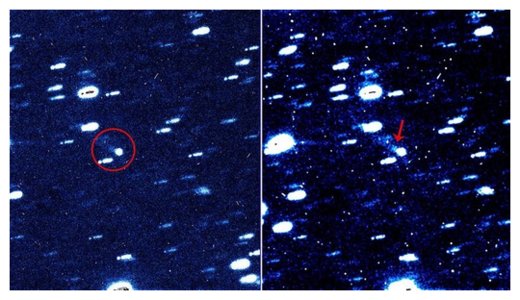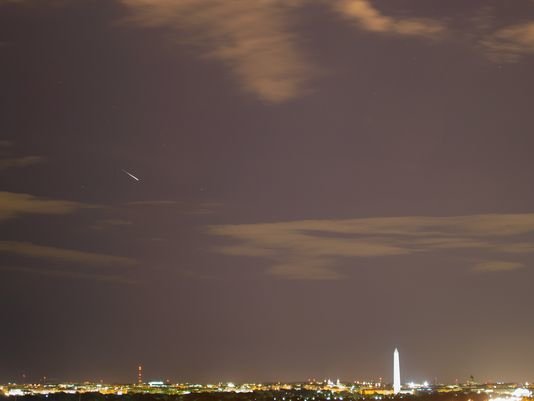
© M. Kelley/S. Protopapa/UMDThe image on the left is a combination of five 300-s exposures tracking the ‘asteroid,’ while the image on the right is a smoothed version to help enhance the tail (indicated by the arrow), proving that it is in fact a comet.
Astronomers with their eyes on the sky thought they spotted an asteroid, but a closer look revealed a comet.
It was initially labeled as asteroid 2016 BA14 by the Pan-STARRS survey, but a group of astronomers from the University of Maryland took a closer look and
found something very intriguing: a tail.
Rather than a rocky, metallic asteroid, it appears the space object is actually an icy comet. That means it's one of two comets flying by Earth in March. The other, Comet 252P/LINEAR 12, will pass by on March 21.The newly discovered comet will fly by Earth the very next day, March 22, in the morning, and it will set a record.
"The P/2016 BA14 (PanSTARRS) flyby is significant because it is one of the
closest flybys of a comet since comet Lexell in 1770, which passed about six lunar distances away," Michael Kelley of the University of Maryland, who confirmed the asteroid was a comet, told weather.com. "Asteroids frequently flyby at such close distances, but comet encounters are rare."
It will be the third closest comet flyby of Earth of all time, but it will still be 9 times the distance to the moon - well out of Earth's range.Even more interesting than its close range, Kelley says, is the possibility that the comet is a sister comet to 252P/LINEAR 12.
Comet P/2016 BA14 could very well have
broken off from comet 252P/LINEAR 12, Slate reports.
"If we can understand if and why these small comets broke apart years ago, we may be able to better determine the general impact threat comets present to the Earth," Kelley says.
Astronomers will keep a close eye on both comets through Hubble Space Telescope observations. If you want to see the comet, you'll need binoculars or a telescope.


Comment: The American Meteor Society (AMS) has received 250 reports about a meteor fireball seen over Luxembourg, France, Belgium and Germany on 25th February 2016.
Over the past several days other meteor fireballs sightings in the region include: Spain, Portugal, Morocco and southern France.
NASA space data supports citizens' observations that - meteor fireball activity is increasing dramatically!